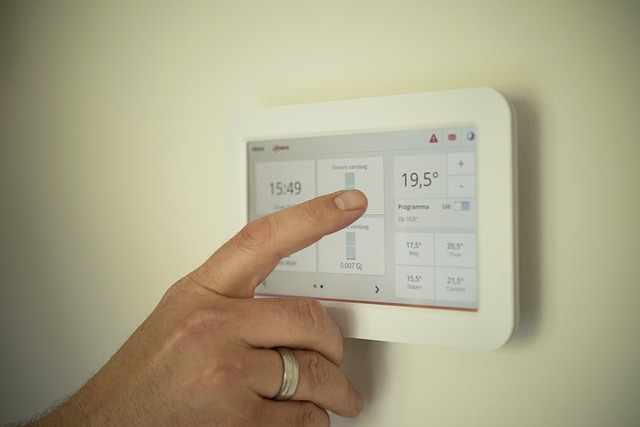Smart Air Conditioning: A Guide to Upgrading Your Cooling System
In today's technology-driven world, traditional air conditioning systems are evolving into sophisticated, connected solutions that offer unprecedented comfort, energy efficiency, and convenience. Smart air conditioning represents the next generation of cooling technology, allowing homeowners to precisely control their indoor climate, reduce energy consumption, and integrate cooling into their broader smart home ecosystem. Whether you're considering an upgrade to your existing system or installing a completely new solution, understanding the capabilities and benefits of smart air conditioning can help you make informed decisions about improving your home's comfort and efficiency.

What Makes an Air Conditioning System “Smart”?
Smart air conditioning systems differ from conventional units primarily through their connectivity and automation capabilities. These advanced systems typically include Wi-Fi connectivity, allowing users to control temperature settings remotely via smartphone apps. Many incorporate learning algorithms that adapt to your schedule and preferences over time, automatically adjusting settings to maintain optimal comfort while minimizing energy usage. Key smart features include geofencing (which detects when you’re approaching home to pre-cool spaces), integration with voice assistants like Amazon Alexa or Google Assistant, and compatibility with smart home platforms that coordinate cooling with other systems like lighting and security.
Benefits of Upgrading to Smart Air Conditioning
Upgrading to a smart cooling system offers numerous advantages beyond basic temperature control. Energy efficiency stands out as a primary benefit, with smart systems reducing consumption by up to 25% through precise scheduling, zoning capabilities, and adaptive learning that prevents unnecessary cooling. The convenience factor is equally compelling—imagine adjusting your home’s temperature from your office before heading home or receiving maintenance alerts before small issues become costly repairs. Smart systems also provide detailed usage data and analytics, allowing you to track energy consumption patterns and identify opportunities for additional savings. For allergy sufferers, integration with air quality monitors can automatically adjust fan speeds and filtration in response to detected pollutants.
Smart Air Conditioning Options for Different Home Types
The ideal smart cooling solution varies significantly based on your home type and existing infrastructure. For homes with central air conditioning, smart thermostats like Ecobee or Nest offer the simplest upgrade path, replacing your conventional thermostat while adding connectivity features. Homeowners with mini-split systems can explore dedicated controllers that retrofit existing units with smart capabilities. Window units and portable air conditioners increasingly come with built-in Wi-Fi connectivity and app control. For comprehensive home renovations or new construction, fully integrated multi-zone systems with individual room sensors provide the most sophisticated solution, allowing personalized temperature settings throughout the home while optimizing overall efficiency.
What to Consider Before Installing a Smarter Cooling System
Before committing to a smart cooling upgrade, several factors deserve consideration. Compatibility with existing equipment is crucial—not all conventional systems work seamlessly with smart controllers without additional adapters or modifications. Your home’s Wi-Fi coverage must be reliable throughout areas where sensors or controllers will be installed. Privacy concerns merit attention, as smart systems collect significant data about your home occupancy and habits. Consider whether your preferred system locks you into a specific ecosystem (Apple HomeKit, Google Home, etc.) or offers cross-platform compatibility. Finally, assess your technical comfort level, as some systems require professional installation while others are designed for DIY setup.
Cost Comparison of Smart Air Conditioning Systems
When budgeting for a smart air conditioning upgrade, costs vary widely based on the approach you choose. Entry-level solutions like smart thermostats offer the most affordable starting point, while complete system replacements represent significant investments with longer-term returns.
| Solution Type | Average Cost Range | Installation Requirements | Potential Energy Savings |
|---|---|---|---|
| Smart Thermostat | $150-$350 | DIY or professional ($100-$200) | 10-15% annually |
| Smart Controllers for Mini-Splits | $300-$700 | Professional recommended ($150-$300) | 15-20% annually |
| Smart Window/Portable AC Units | $400-$1,000+ | Minimal (DIY) | 10-15% annually |
| Full Smart HVAC System | $3,000-$10,000+ | Professional required ($500-$2,000) | 20-30% annually |
Prices, rates, or cost estimates mentioned in this article are based on the latest available information but may change over time. Independent research is advised before making financial decisions.
Integration with Your Broader Smart Home Ecosystem
A truly intelligent cooling solution works in harmony with other smart home technologies. When selecting a smart air conditioning system, consider how it will integrate with existing devices and platforms. Systems compatible with major ecosystems like Amazon Alexa, Google Home, or Apple HomeKit allow for unified control through a single app or voice commands. Advanced integrations enable sophisticated automation scenarios—for example, coordinating with smart blinds to lower when direct sunlight would increase cooling needs, or working with occupancy sensors to adjust cooling in unused rooms. Some systems even integrate with energy monitoring platforms that can automatically adjust cooling based on current electricity rates or solar production, maximizing efficiency and potentially participating in utility demand-response programs that provide financial incentives for reduced consumption during peak periods.
As smart air conditioning technology continues to evolve, the focus increasingly shifts toward creating comprehensive climate control solutions that balance comfort, energy efficiency, and personalization. By understanding the options available and carefully considering your specific home needs, you can make an informed decision about upgrading your cooling system that will enhance your comfort while potentially reducing long-term operating costs.




